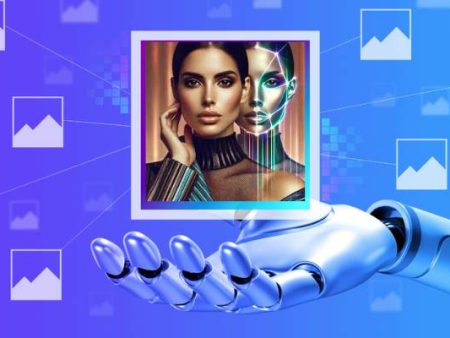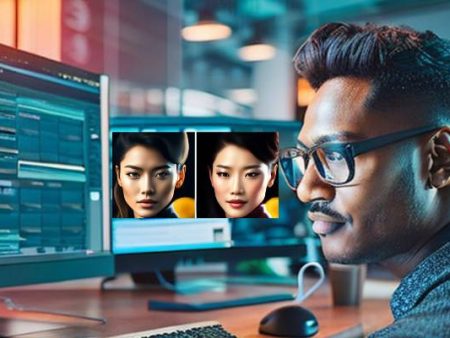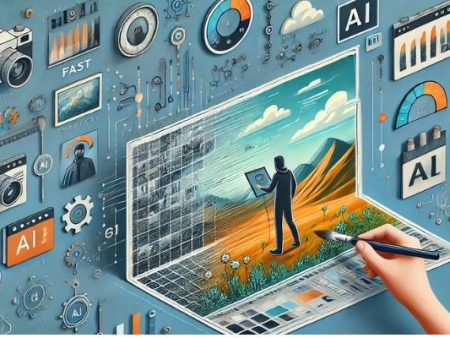Fashion has always been a playground for imagination. Designers dream up the impossible, models bring it to life, and audiences gasp (or sometimes cringe) at what struts down the runway. But today, a new player is walking onto that stage—artificial intelligence.
AI isn’t just dabbling in fashion; it’s starting to transform it. From virtual models who never tire, age, or ask for lighting breaks, to AI-designed outfits that push creativity beyond fabric and thread, the industry is at a turning point. And this isn’t science fiction—it’s already happening.
But here’s the big question: are we looking at a golden age of innovation or a hollow era where machines replace the humanity of style?
That tension is at the heart of the debate on the role of AI in fashion, and it deserves a closer look.
The Rise of Virtual Models
Virtual models aren’t entirely new—remember when brands began using CGI influencers on Instagram a few years back? Lil Miquela, a computer-generated influencer, now has millions of followers.
But AI has taken things further. Instead of painstakingly animating or designing each digital figure, companies can now generate models instantly with AI image tools.
This shift offers huge advantages:
- Flexibility: AI models can wear anything from haute couture to everyday basics, with zero wardrobe malfunctions.
- Diversity on demand: Need a South Asian plus-size model with vitiligo for a campaign? Type it into a prompt, and she appears.
- Cost savings: No flights, no photoshoot crews, no hotels. Just pixels.
On paper, it sounds revolutionary. But fashion isn’t only about images—it’s about presence, energy, charisma.
A model’s strut, the way fabric clings or sways, the chemistry between models and audiences—those things can’t yet be synthesized.
That’s where some people feel AI models fall short: they look convincing, but they don’t feel alive.
AI-Designed Outfits: Where Fantasy Meets Function
If models are one piece of the puzzle, AI-designed outfits are another. Using text-to-image prompts, designers (and sometimes even fans) can generate thousands of possible designs in seconds. Think of it as brainstorming on steroids.
This has issues with AI: time-saving or creativity-killing.
On one side:
- Designers save enormous amounts of time. They can iterate styles, colors, and textures endlessly.
- Young or underfunded designers, who might not have access to large studios, suddenly have tools as powerful as big fashion houses.
On the other side:
- Critics argue AI spits out designs that lack depth because the tool doesn’t understand cultural context or human emotion.
- There’s also the danger of homogenization—if everyone uses similar AI tools, will all fashion start looking the same?
It’s a delicate balance between efficiency and originality.
How Retouching: Goodbye to Human Works?
Photography has always been as important to fashion as the clothes themselves. But now we’re seeing the how retouching: goodbye to human works debate unfold.
AI-powered retouching doesn’t just smooth wrinkles or erase stray hairs; it can completely reinvent a photo. It can swap garments, change lighting, and even redesign backgrounds in seconds.
For photographers and editors, this raises existential questions. If AI can generate a flawless editorial spread without a single camera click, what happens to the artistry of human retouching?
Personally, I think there’s still something irreplaceable about human touch. A photo editor doesn’t just polish—they interpret.
They understand mood, context, and the subtle balance between perfection and authenticity. AI tends to push everything toward polished uniformity. And fashion, at its core, thrives on individuality.
Debate on the Role of AI in Fashion
This brings us to the bigger debate on the role of AI. Should AI be a co-creator, a tool, or the main driver of fashion’s future?
Proponents argue AI democratizes the industry. It lowers barriers, allowing anyone with imagination and a keyboard to play designer. That could lead to new voices, new aesthetics, and a more inclusive fashion landscape.
Skeptics, though, worry that the soul of fashion is at risk. If design is about storytelling—woven through fabric, body language, and lived experiences—can a machine truly contribute to that narrative?
I think both sides are right. AI is a tool, and like any tool, it can be misused. A hammer can build a house or break a window. The outcome depends on who wields it.
Impact of Restoration Easier Than Ever
One surprising benefit of AI in fashion lies in preservation. Archival outfits, old fashion sketches, and vintage photographs can now be digitally restored with remarkable accuracy.
The impact of restoration easier than ever means museums and fashion historians can bring lost garments back to life digitally, even reconstructing how they might have looked on models decades ago.
That’s not just nostalgia—it’s education. Imagine students studying Coco Chanel’s early sketches, not in faded ink, but as vibrant 3D reconstructions. AI could make fashion history more accessible and engaging than ever.
Still, there’s a caveat: does restoration cross into reinvention? If AI “restores” something by making it sharper, prettier, or more polished than it ever was, are we learning history—or rewriting it?
Economic and Industry Shifts
Numbers don’t lie, and they paint an interesting picture.
- The AI fashion market is expected to reach $4.4 billion by 2027 (MarketsandMarkets).
- Meanwhile, traditional fashion jobs—photographers, stylists, models—are projected to shrink as automation takes over parts of their work.
- A Statista report found that nearly 27% of U.S. adults had already experimented with text-to-image tools by 2023. That number is only climbing, and fashion is one of the fastest-growing use cases.
The economics lean in favor of AI. But the human side of fashion—the livelihoods tied to it—remains complicated.
Emotional Resonance: What Fashion Risks Losing
Here’s my personal take. Fashion isn’t just about clothes or images—it’s about feeling. The goosebumps when a model walks in an unforgettable gown.
The joy of finding an outfit that makes you feel like yourself. The pride of a designer watching their ideas come to life on a runway.
AI can generate images that dazzle the eye, but can it evoke those deeper emotions? Not yet. And maybe never. Because fashion has always been tied to human presence, not just human aesthetics.
Ethical Questions: Who Owns the Output?
There are unresolved legal and ethical questions too. If an AI outfit is trained on thousands of existing designs, who owns the result?
The machine? The person who typed the prompt? The original designers whose work trained the model?
Until those questions are settled, the industry is walking a fine line. Intellectual property law hasn’t caught up with AI’s pace, and fashion—an industry famous for knockoffs and fast copying—could be thrown into chaos.
Where Do We Go From Here?
So where is fashion headed? Here’s one way to see it:
- AI as a democratizer: New designers and small brands will rise by leveraging tools that level the playing field.
- AI as a collaborator: Established houses will blend human craft with AI speed, creating hybrid workflows.
- AI as a disruptor: Some traditional jobs will fade, but new ones will emerge—prompt engineers, digital fashion curators, AI ethics consultants.
The question isn’t whether AI will shape fashion—it already is. The question is whether we’ll shape AI thoughtfully, with an eye toward preserving the heart of fashion: its human connection.
Conclusion: Fashion’s Next Chapter
So, can AI replace the runway, the designer’s sketchbook, the photographer’s lens? Not entirely. But it can bend them, reshape them, even challenge them.
AI in fashion is thrilling because it opens creative possibilities we never had before. It’s terrifying because it threatens to hollow out the very human soul that makes fashion meaningful.
To me, the path forward isn’t about choosing between humans and AI. It’s about weaving both into the same fabric—using machines to expand imagination, while holding on to the messy, emotional, imperfect, brilliant spark that only people bring.
That spark, I believe, is what will keep fashion alive, no matter how advanced the algorithms become.


